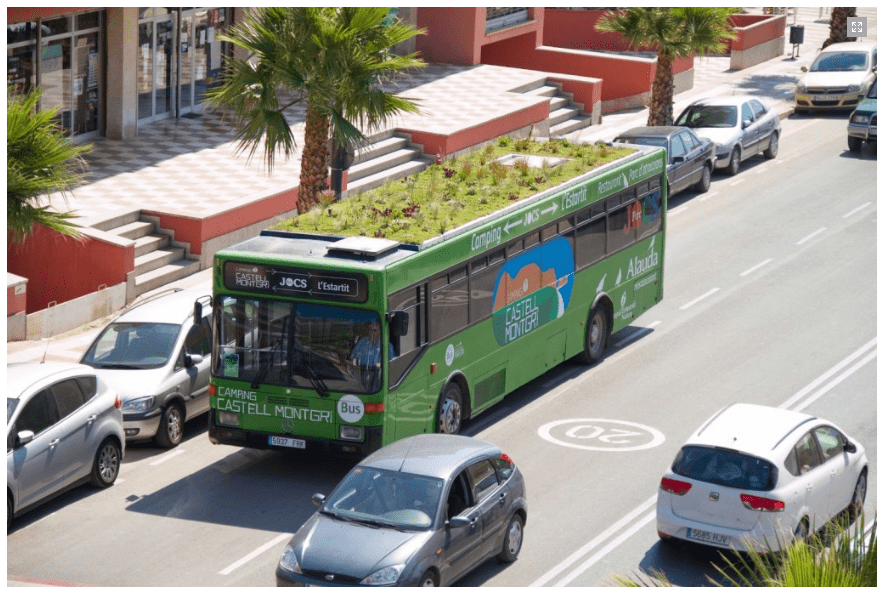Imagine seeing the 3,000 buses New Jersey Transit owns and leases topped with gardens. This idea is becoming a reality through PhytoKinetic, which equips a van or bus with plants and a vegetation cover so that a PhytoKinetic bus is no risk to passengers, pedestrians or other vehicles – it just looks nice and cleans the air. This video shows the whole process of building a rooftop garden on a bus.
Here’s some benefits to incorporating a PhytoKinetic bus into cities:
- A PhytoKinetic bus garden will help absorb a great amount of CO2 that is generated in urban areas.
- It encourages and promotes the values of sustainability.
- It’s much more visually appealing than the current structure of bus rooftops and could be a way to draw in tourists.
- PhytoKinetic takes advantage of the amenities of the bus, like using the water produced for the air conditioning system to irrigate the plants.
- The garden is lightweight because it uses a 2.75-inch thick hydroponic foam instead of soil.
This is the Best Idea We’ve Seen All Week, because there aren’t any apparent negative consequences to installing PhytoKinetic on buses. And we agree with owner and creator, Marc Granen’s views that this idea can improve the relationship between urban residents and nature. The combination of city structure with glimpses of moving vegetation is truly innovative.
Currently, PhytoKinetic buses are only utilized in a city in Spain, but Granen envisions city bus companies all over the globe jumping on board.
View from the top of a phytokinetic bus
About the Author/s
Lauren is a writer and blogger for The Digest. A lifelong Sussex County resident, Lauren has adventured out of the sticks of northwest New Jersey to join The Digest team. When she is not commuting in rush hour traffic, she is typically frolicking outdoors or cheering on the Yankees.
